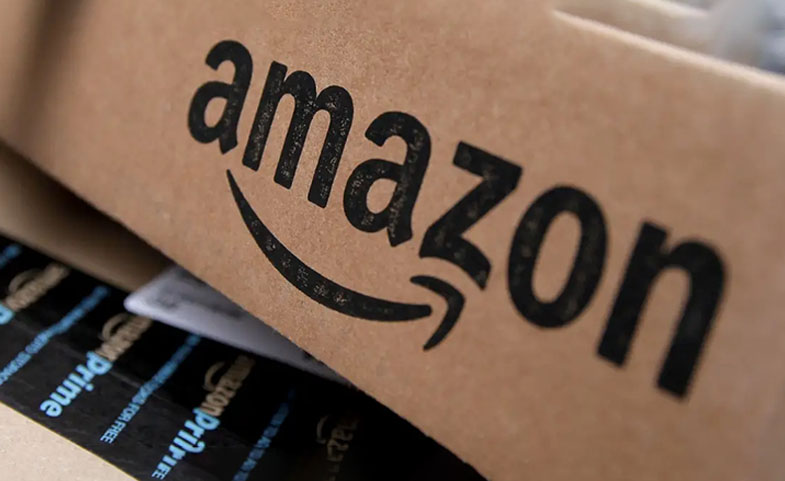In the vast e-commerce landscape, Amazon stands as a behemoth, offering a plethora of products to millions of consumers worldwide. However, with great popularity comes great responsibility, and Amazon has had to grapple with the issue of counterfeit products infiltrating its marketplace. Counterfeits not only harm consumers by delivering subpar or potentially dangerous goods but also damage the reputation of genuine sellers.
What are Amazon's counterfeit products?
Amazon's counterfeit products encompass imitation, knockoff, or fraudulent items falsely presented under the guise of authentic brands or products. These replicas are crafted to closely resemble the originals but lack authorization or production from the genuine manufacturer.
The spectrum of counterfeit goods on Amazon spans from high-end luxury items to everyday commodities like electronics, apparel, toys, and cosmetics. Typically, these knockoffs are priced lower than authentic products, appealing to bargain-seeking consumers. However, the allure of affordability comes at the cost of potential quality deficiencies and the increased risk of compromising consumer health and safety.
What happens if you sell counterfeit items on Amazon?
Selling counterfeit items on Amazon can lead to severe consequences due to the platform's strict stance against such practices. Amazon has implemented robust measures to combat the sale of fake products, and sellers found engaging in such activities may face various actions.
If Amazon identifies a seller involved in the sale of counterfeit items, potential repercussions include the suspension or termination of selling privileges. This can significantly impact the seller's business by limiting or entirely halting their ability to operate on the platform. Additionally, Amazon may take steps such as removing counterfeit listings, preventing their relisting, seizing the inventory of counterfeit products, and ultimately destroying them.
Beyond the operational impacts, sellers may also face legal consequences, being held liable for selling counterfeit items. Legal action from Amazon or the affected brand owner may ensue, compounding the negative outcomes for the seller. Furthermore, the repercussions extend to the seller's reputation, customer relations, and overall business viability on the platform, as negative feedback and reviews can tarnish their standing and affect future sales.
How to identify Counterfeit Products
In-depth Product Research:
- Conduct thorough research on the products you intend to purchase.
- Familiarize yourself with the genuine product's features, packaging, and manufacturer details.
- This knowledge will be invaluable in spotting potential counterfeits.
Check Seller Feedback:
- Evaluate the seller's feedback and ratings.
- A reputable seller is more likely to provide authentic products.
- Be wary of sellers with limited or negative feedback.
Verify Authenticity with the Manufacturer:
- Contact the product's manufacturer directly to confirm whether the seller is an authorized distributor.
- Many brands maintain lists of authorized sellers, helping consumers make informed decisions.
Compare Prices:
- If a deal seems too good to be true, it probably is.
- Counterfeit products are often priced significantly lower than their genuine counterparts.
- Compare prices across different sellers to identify outliers.
How to remove counterfeit products from Amazon?
Identification of IP Infringement:
- Recognize the type of intellectual property (IP) being infringed – trademarks, copyrights, or patents.
Trademark Infringement:
- Utilize Amazon's Brand Registry program for registered trademark owners.
- Enroll your brand and report infringing products for investigation and potential removal.
Copyright Infringement:
- If you own copyright, file a complaint through Amazon's Intellectual Property Policy program.
- Report instances of counterfeit copies, and Amazon will investigate and take necessary action.
Patent Infringement:
- For patent owners, file a complaint using the Intellectual Property Policy program.
- Report counterfeit versions of your product for Amazon's investigation.
Provide Evidence:
- Submit as much evidence as possible, including IP registration documents and images/screenshots of infringing products.
Access the IP Infringement Report Page:
- Navigate to the appropriate Amazon regional domain's report page using the format amazon[regional domain extension]/report/infringement.
Seller Account Requirement:
- Ensure you have a specific Amazon seller account to complete the infringement report form.
Specify IP Owner or Agent Status:
- Clearly state whether you are the IP owner or an agent acting on behalf of the owner.
Select Type of IP Infringement:
- Choose the relevant type of infringement (trademark concerns) and specify that the product is counterfeit.
Provide Product Information:
- Furnish brand name, ASIN or product identifier, and any additional relevant information.
Contact Details:
- Share your complete name, email address, and phone number for Amazon's communication.
Wait for Amazon's Response:
- After filing a complaint, exercise patience and refrain from interfering with Amazon's investigation.
- Avoid direct contact with the seller or leaving negative feedback during this period.
Cooperate with Amazon:
- Respond promptly if Amazon requires additional information for a thorough investigation.
Outcome Notification:
- Amazon will inform you of the action taken, which may include removing the counterfeit product or other measures against the seller.
Avoid Interference:
- Throughout the process, avoid actions that could hinder Amazon's investigation, ensuring a fair and efficient resolution.
How can you report alleged counterfeit products or infringing products?
- Go to the Amazon product listing page for the item you suspect is counterfeit or infringing.
- Navigate to the “Product Information” section on the product listing page.
- Click on the "Submit" option to initiate the reporting process.
- Select the reason for the report, indicating whether it's a "counterfeit item" or "intellectual property infringement."
- Amazon will review the report and assess the validity of the claim.
If deemed necessary, Amazon may take actions such as removing the product listing or suspending the seller’s account.Understand that reporting a product does not guarantee immediate removal, and Amazon may require additional information.
Reporting Counterfeits on Amazon
Use the Amazon Brand Registry:
- Brands can enroll in the Amazon Brand Registry to protect their intellectual property.
- This program allows registered brand owners to report and remove counterfeit listings more efficiently.
File a Report with Amazon:
- If you come across a counterfeit product, report it to Amazon through their reporting system.
- Provide detailed information about the listing, including the ASIN, seller name, and a clear description of why you believe the product is counterfeit.
Utilize the "Report a Violation" Tool:
- On each product page, Amazon provides a "Report a Violation" tool.Use this tool to report suspicious listings directly.
- Choose the appropriate violation category and provide detailed information to support your claim.
Engage with Customer Support:
- Reach out to Amazon's customer support if you encounter difficulties in reporting counterfeit products.
- Customer support can guide you through the process and escalate the issue to the appropriate team.
How to Prevent Counterfeit Purchases
Check Product Reviews:
- Read product reviews to gain insights into other customers' experiences.
- Look for reviews that mention counterfeit concerns or issues with product authenticity.
Opt for Prime and Fulfilled by Amazon (FBA):
- Products fulfilled by Amazon are generally more reliable, as they go through Amazon's fulfillment process.
- Additionally, opting for Prime ensures quicker shipping and better customer support.
Verify Seller Information:
- Before making a purchase, verify the seller's information, including their business name and contact details.
- Legitimate sellers are transparent about their identity and can be reached easily.
Conclusion:
Removing Amazon counterfeit products requires a collective effort from consumers, brands, and the platform itself. By staying vigilant, reporting suspicious listings, and engaging with Amazon's support and reporting tools, we can contribute to creating a safer and more trustworthy marketplace for everyone. Remember, an informed and proactive consumer is a powerful force against the proliferation of counterfeit goods on Amazon.


